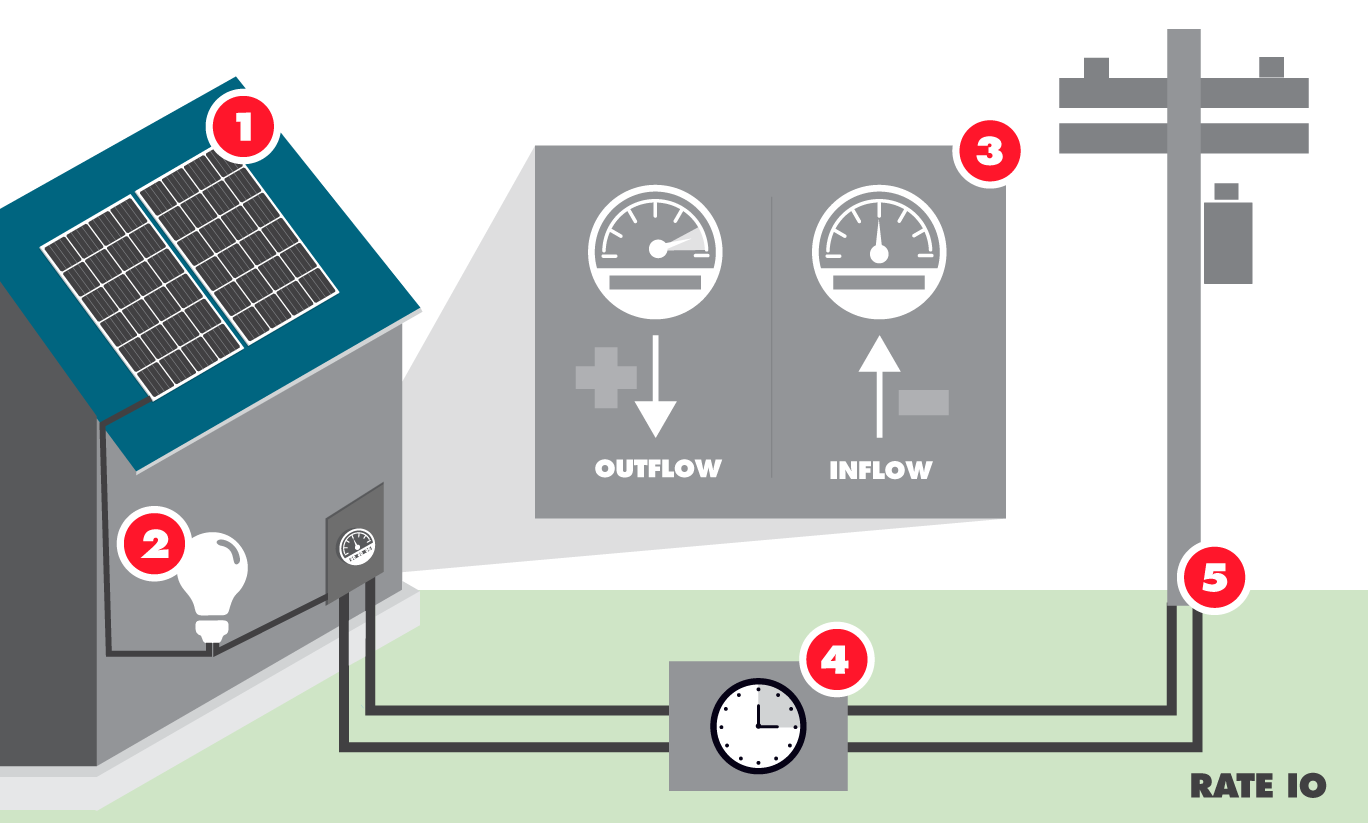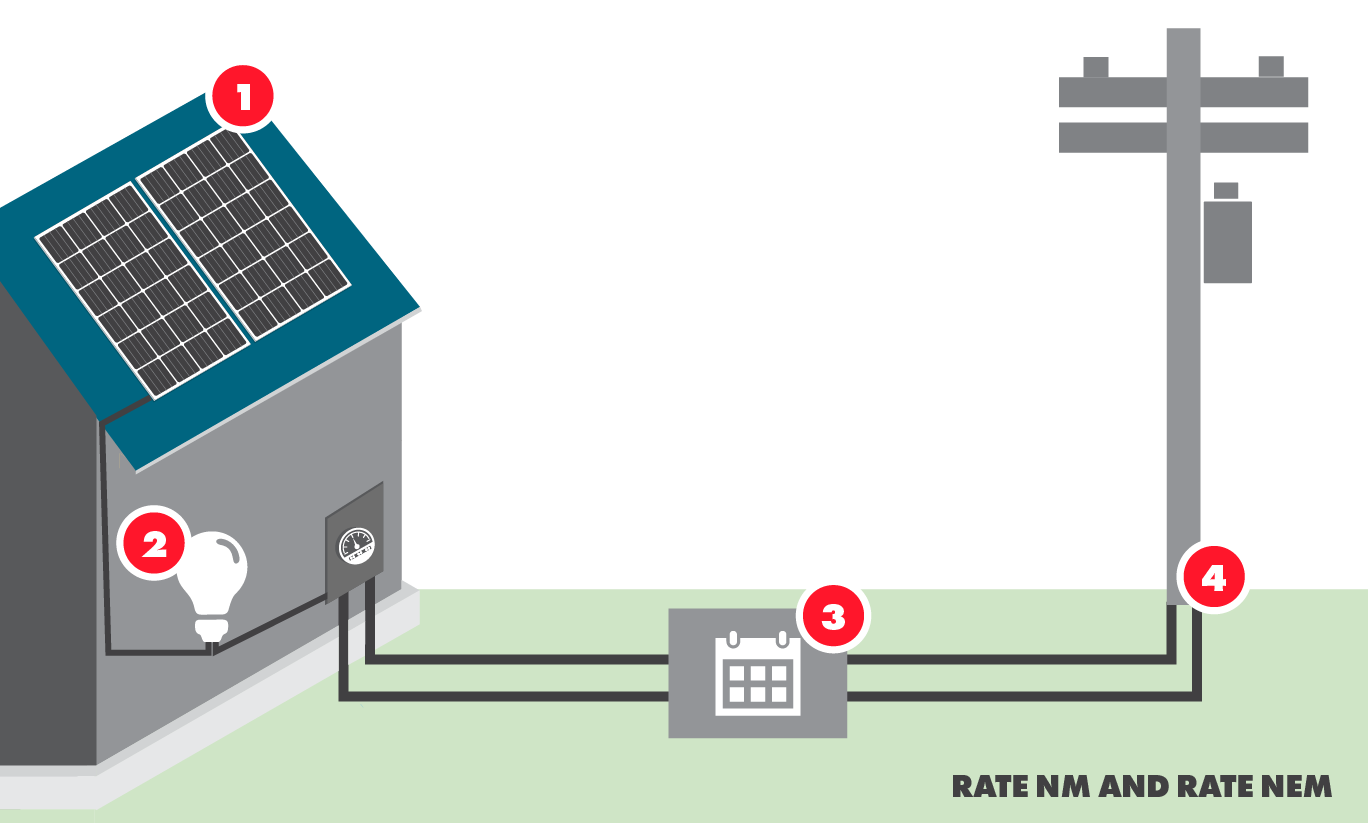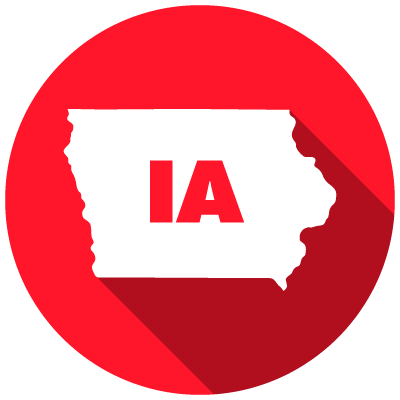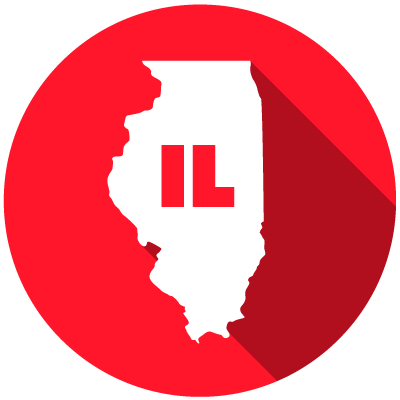Customer Interconnection and Rates Information
Customer generation – or distributed generation – systems are small-scale, on-site power sources located at customers’ homes or businesses. For questions related to distributed generation, please email privategeneration@midamerican.com.
Iowa Applications and Rate Information
In Iowa, MidAmerican offers an Inflow/Outflow Rate and Rate QF.
Inflow/Outflow Rate
You pay the kWh retail volumetric rate (including riders) for all MidAmerican power delivered to your home during each 15-minute period of the billing period (inflow). MidAmerican credits you the kWh retail volumetric rate (including riders) for all net power delivered to the grid during each 15-minute period of the billing period (outflow). The energy outflow is credited at the kWh retail volumetric rate and will carry over to future billing periods, if you contribute more energy to the grid than you used. These excess credits expire based on the annual billing year (January or April) you select.
To choose when you'd like your annual billing year to reset, complete the Rate IO election form.






Rate QF – Cogeneration and Small Power Production Facilities
MidAmerican offers a cogeneration and small power production rate for energy delivered to our electric distribution system from a FERC-approved qualifying facility.
As a customer, you and your installers are responsible for following the interconnection rules of the Iowa Utilities Commission, as well as meeting all MidAmerican requirements and those of your local city and/or county, as applicable.
Learn more about distributed generation in Iowa from the Iowa Utilities Commission and the Iowa Energy Office.
Illinois Applications and Rate Information
In Illinois, MidAmerican offers a Net Metering Rate and Rate QF.
Net Metering Rate
The customer's net metering rate will be determined as follows:
- Rate NM – customers that successfully completed an application for net metering service before January 1, 2025
- Rate NEM – customers that successfully complete(d) an application for net metering service on or after January 1, 2025
With net metering, the meter will measure both the flow of energy delivered to MidAmerican and the energy delivered to the customer.
- Under Rate NM, if a customer consumes more energy than they deliver (purchaser of energy), their delivery and energy supply charges will be based on the net kWh consumed. If the customer delivers excess energy to MidAmerican's electric distribution system during the billing period (seller of energy), net metering provides the customer delivery credits and energy supply credits* that can be stored in the customer's account for future use in subsequent billing periods. These excess credits expire based on the annual period (April or October) selected by the customer or upon termination of service.
- Under Rate NEM, delivery charges will be based on the total amount of energy delivered to the customer. If a customer consumes more energy than they deliver (purchaser of energy), their energy charges will be based on the net kWh consumed. If the customer delivers excess energy to MidAmerican's electric distribution system during the billing period (seller of energy), net energy metering provides the customer energy supply credits* that can be stored in the customer’s account and used to offset future energy charges in subsequent billing periods. Excess supply energy credits* can be selected as a one-for-one kWh credit or monetary credit. Per the Public Utilities Act, customers on Time-of-Use rates only have the monetary credit option.
- One-for-One kWh Credit Option:
For customers who elect the one-for-one kWh credit option, MidAmerican will provide a volumetric kWh credit for each excess kWh generated by the customer’s facility and supplied to MidAmerican. These kWh credits will be used to offset future supply-related kWh charges, regardless of future changes to rates/prices. - Monetary Credit Option:
For customers who elect the monetary credit option, MidAmerican will calculate a per-kWh credit based on the value of the supply-related charges of the customer’s applicable tariffed rate at the time the energy is generated. These monetary credits may or may not fully offset future supply-related charges due to potential changes in rates/prices.
- One-for-One kWh Credit Option:
*If the customer purchases their energy supply from an Alternative Retail Electric Supplier (ARES), the ARES will provide any applicable energy supply credits.
Note: Electric customers installing a distributed generation facility and seeking net metering in Illinois must provide an Installer Certification Form, a Net Energy Metering Application and a copy of the installation invoice.





Rate NM – Excess energy produced by the customer is credited in the customer’s account via delivery credits and energy supply credits*, or the customer will be billed for over-consumption.
Rate NEM – Delivery charges are billed to the customer based on the total amount of energy delivered to the customer. For energy supply charges, excess energy produced by the customer is credited in the customer’s account via energy supply credits*, or the customer will be billed for the net over-consumption.
*If the customer purchases their energy supply from an Alternative Retail Electric Supplier (ARES), the ARES will provide any applicable energy supply credits.
Rate QF – Cogeneration and Small Power Production Facilities
MidAmerican offers a cogeneration and small power production rate for energy delivered to our electric distribution system from a FERC-approved qualifying facility.
MidAmerican offers a cogeneration and small power production rate for energy delivered to our electric distribution system from a FERC-approved qualifying facility.
Learn more about distributed generation in Illinois from the Citizens Utility Board.
As a customer, you and your installers are responsible for following the interconnection rules of the Illinois Administrative Code Part 452, as well as meeting all MidAmerican requirements and those of your local city and/or county, as applicable.
South Dakota Applications and Rate Information
Rate QF – Cogeneration and Small Power Production Facilities
MidAmerican offers a cogeneration and small power production rate for energy delivered to our electric distribution system from a FERC-approved qualifying facility.
Learn more about distributed generation in South Dakota from the Public Utilities Commission.
As a customer, you and your installers are responsible for following the interconnection rules of the South Dakota Public Utilities Commission Administrative Rules Chapter 20:10:36, as well as meeting all MidAmerican requirements and those of your local city and/or county, as applicable.
For questions related to distributed generation, please contact privategeneration@midamerican.com.


